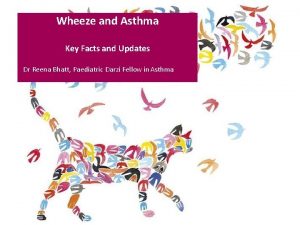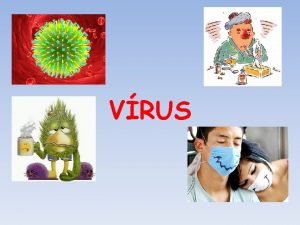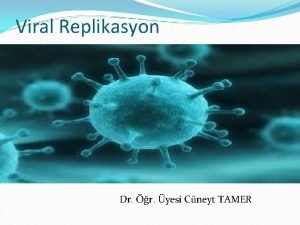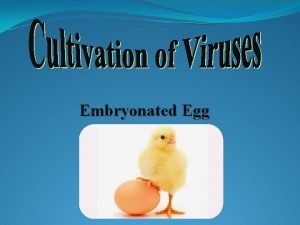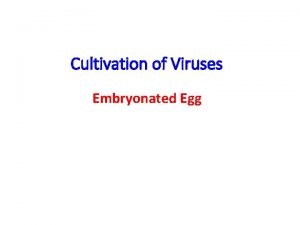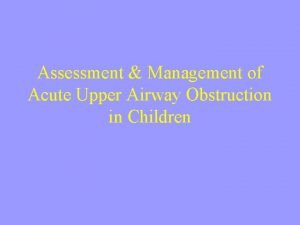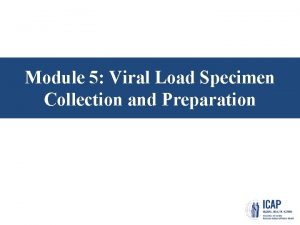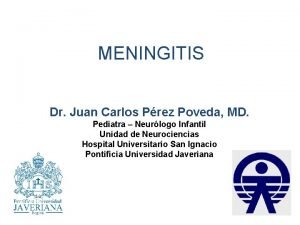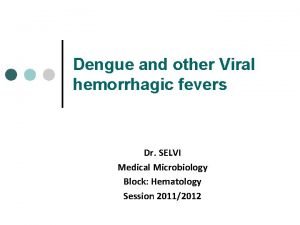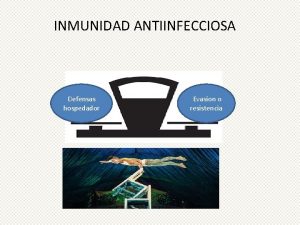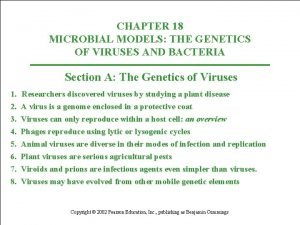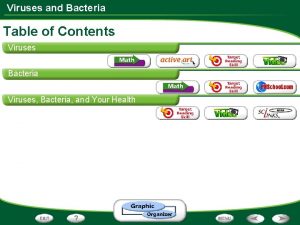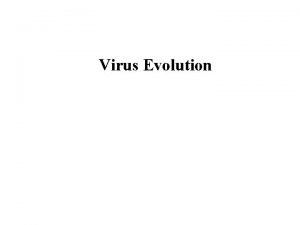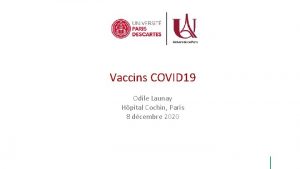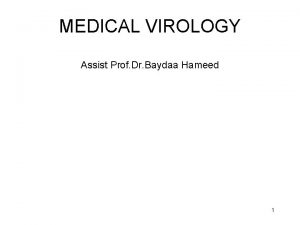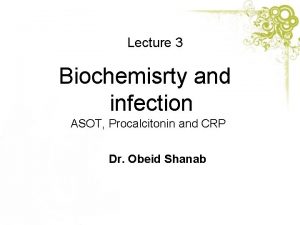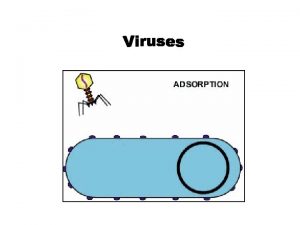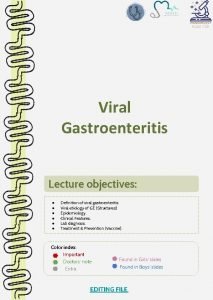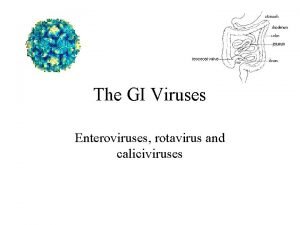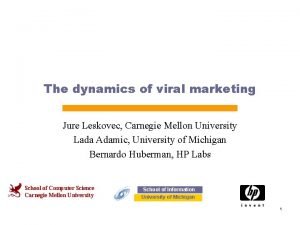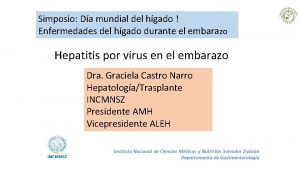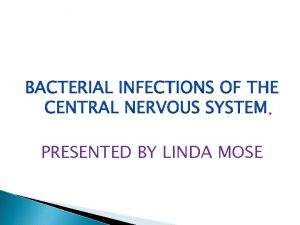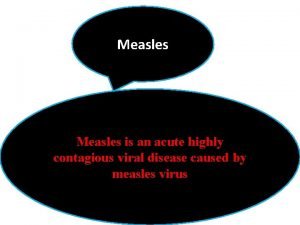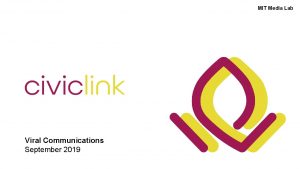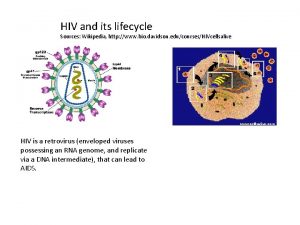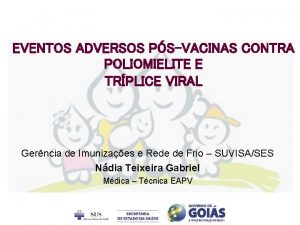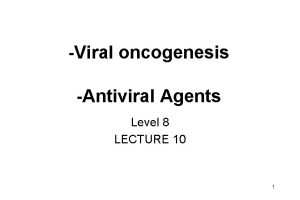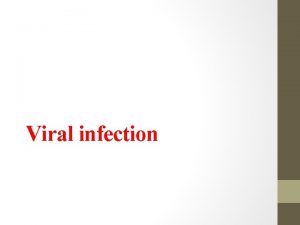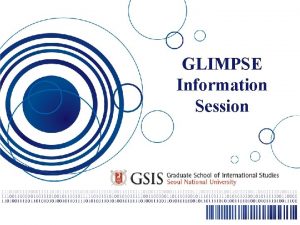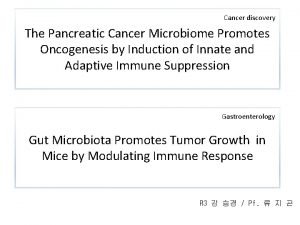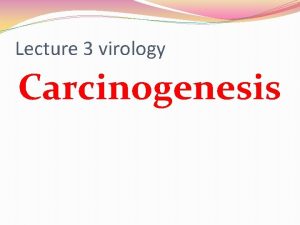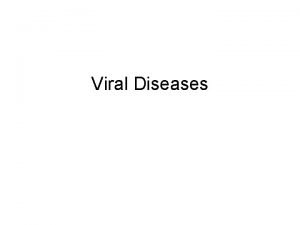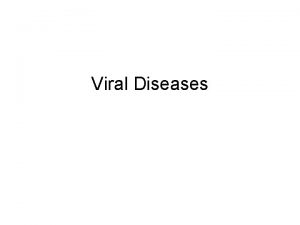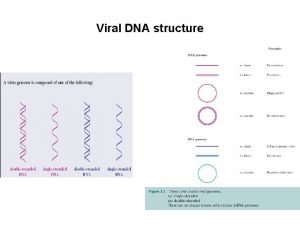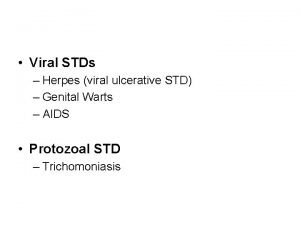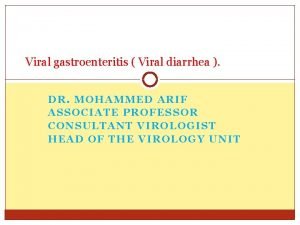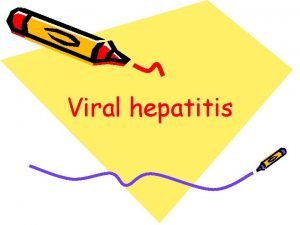A Glimpse on Viral Oncogenesis and Epidemiology of

![Non-Hodgkin Lymphoma n n n ICD-10 C 82 -C 85 C 82 Follicular [nodular] Non-Hodgkin Lymphoma n n n ICD-10 C 82 -C 85 C 82 Follicular [nodular]](https://slidetodoc.com/presentation_image_h2/421a37f00b3937c7d1a8fd59de1a4796/image-2.jpg)


















































- Slides: 52

A Glimpse on Viral Oncogenesis and Epidemiology of HIV/AIDS related Non-Hodgkin Lymphoma Weiming ZHU Nov 6, 2009
![NonHodgkin Lymphoma n n n ICD10 C 82 C 85 C 82 Follicular nodular Non-Hodgkin Lymphoma n n n ICD-10 C 82 -C 85 C 82 Follicular [nodular]](https://slidetodoc.com/presentation_image_h2/421a37f00b3937c7d1a8fd59de1a4796/image-2.jpg)
Non-Hodgkin Lymphoma n n n ICD-10 C 82 -C 85 C 82 Follicular [nodular] non-Hodgkin's lymphoma C 83 Diffuse non-Hodgkin's lymphoma C 83. 3 Large cell (diffuse) C 83. 7 Burkitt's tumour n n C 84 C 85 Peripheral and cutaneous T-cell lymphomas Other and unspecified types of non-Hodgkin's lymphoma

Parkin DM, et al, Cancer incidence in five continents, 2002

Parkin DM, et al, Cancer incidence in five continents, 2002

Incidence of NHL, SEER Incidence Rates by Race 2002 -2006 Race/Ethnicity Male Female All Races 23. 5 per 100, 000 men 16. 4 per 100, 000 women White 24. 4 per 100, 000 men 17. 2 per 100, 000 women Black 18. 3 per 100, 000 men 12. 2 per 100, 000 women Asian/Pacific Islander 15. 5 per 100, 000 men 10. 9 per 100, 000 women American Indian/Alaska Native a 11. 8 per 100, 000 men 10. 0 per 100, 000 women Hispanic b 19. 1 per 100, 000 men 14. 6 per 100, 000 women

Mortality of NHL, SEER Death Rates by Race 2002 -2006 Race/Ethnicity Male Female All Races 9. 0 per 100, 000 men 5. 7 per 100, 000 women White 9. 3 per 100, 000 men 5. 9 per 100, 000 women Black 6. 3 per 100, 000 men 4. 1 per 100, 000 women Asian/Pacific Islander 5. 4 per 100, 000 men 3. 7 per 100, 000 women American Indian/Alaska Native a 5. 2 per 100, 000 men 4. 4 per 100, 000 women Hispanic b 6. 4 per 100, 000 men 4. 6 per 100, 000 women

Estimated NHL in US, 2009 n New cases: 65, 980 n Deaths: 19, 500 http: //www. cancer. gov/cancertopics/types/non-hodgkin

Risk Factors of NHL n Occupational and environmental factors Pesticide : Occupational and environmental n Lifestyle and personal factors Tobacco and alcohol use, Dietary factors, BMI Hair dyes, Hormonal and reproductive factors, Physical activity n Family history and Genetic factors Family history, Genetic variation (SNP) DD. Alexander et al. Int. J. Cancer: 120, 1– 39 (2007)

Risk Factors of NHL n Infection & Immunity Example: Burkitt Lymphoma First Epidemiological Report: Epidemiological evidence for causal relationship between Epstein-Barr virus and Burkitt's lymphoma from Ugandan prospective study Nature 274, 756 - 761 (24 August 1978) Glemser B. Mr Burkitt and Africa. 1970.

HIV/AIDS related NHL “Outbreak” in 1982 “The second unusual malignancy among this group of young males” Diffuse, Undifferentiated Non-Hodgkin’s Lymphoma among Homosexual Males -- United States MMWR June 04, 1982 / 31(21); 277 -9

HIV/AIDS related NHL Lancet 1991; 337: 805– 09

Lancet 1998; 351: 1833– 39

HIV/AIDS associated NHL n n n n n Primary Effusion Lymphoma / PEL ‘Solid’ lymphomas with serous effusions ‘Solid’ lymphomas without serous effusions Large B-cell lymphoma arising in KSHV-associated MCD Immunodeficiency-associated Burkitt Lymphomaplasmacytoid lymphoma Primary central nervous system lymphoma DLBCL, immunoblastic-plasmacytoid lymphoma KSHV/HHV 8 -positive PEL and its solid variant Plasmablastic lymphoma of the oral cavity type PEL

A Carbone et al, Blood. 2009; 113: 1213 -1224

Burkitt Lymphoma. Ed Uthman, MD. , Wikipedia

H. Löffler, J. Rastetter, T. Haferlach. Atlas of Clinical Hematology 6 ed.

Plasmablastic Lymphoma A Carbone et al, Blood. 2009; 113: 1213 -1224

Viral Oncogenesis of NHL n n Epstein-Barr Virus Kaposi Sarcoma-associated Herpesvirus A Arvin et al, Human Herpesvirus. 2007. pp 342. Fig. 22. 1.

A Carbone et al, Blood. 2009; 113: 1213 -1224

Epstein-Barr Virus

Epstein-Barr Virus Subfamily Gammaherpesvirinae Genus Lymphocryptovirus Formal Name: Human herpesvirus 4 / HHV-4 n Common Name: Epstein-Barr virus / EBV n

Seroepidemiology n n n Kenya, 94% of children are EBV seropositive by 3 years of age (Moormann et al. 2005). similar in Nigeria (Martro et al. 2004) , Ethiopia (Tsega et al. 1987). Children in Hong Kong were reported to be 61% EBV seropositive by 2 years (Chan et al. 2001) Germany and USA between 45% and 47% (Martro et al. 2004)

Transmission of EBV n n General: Saliva Oropharyngeal secretions Rare Blood Transfusion

Target Cells of EBV n n Major B-lymphocytes Epithelial cells Other T-cells NK-cells Smooth Muscle Cells Follicular Dendritic Cells (possible)

Molecular Epidemiology n EBV type 1 B 95 -8 cell line, a patient of infectious mononucleosis (IM) , USA n EBV type 2 AG 876 strain, a patient with endemic Burkitt’s lymphoma, Ghana Different in capacity of Transformation Type 1: Transforms cells in culture Type 2: Poorly transforming, reactivates from latency

Molecular Epidemiology n n n Type 1 is the dominant strain in Western countries A higher prevalence of Type 2 in South America Relatively equal in some African countries (Zimber et al. 1986; Yao et al. 1991 b; Gratama et al. 1994; Falk et al. 1997: Young, 1987 #453). Co-infection of Type 1 and Type 2 Less than 10% of adults tested in US and European High in HIV-infected homosexual males and transplant recipients (Katz et al. 1988; Sixbey et al. 1989; Gratama et al. 1994; Yao et al. 1996).

Molecular Epidemiology n n Type 1 predominates in most EBVassociated malignancies : Nasopharyngeal carcinoma, Hodgkin’s lymphoma, and Post-transplant lymphoma Type 2 detected in tumors, particularly those arising in Men who have Sex with Men (MSM) and are HIV infected A Tselis, HB Jenson. Epstein-Barr virus 2006.

Genome of EBV A Tselis, HB Jenson. Epstein-Barr virus 2006. pp 22, Figure 1

Meyers C. 2007 AIDS-Associated Viral Oncogenesis, pp 143 Figure 1

Latent Infection A Arvin et al, Human Herpesvirus. 2007. pp 380. Fig. 24. 1.

Latent Infection A Tselis, HB Jenson. Epstein-Barr virus 2006. pp 24

Potential Mechanism n n Burkitt Lymphoma EBNA-1 cooperate with cmyc ? Deregulate c-myc expression ARF – p 53 pathway? http: //www. benbest. com/he alth/cancer. html

Potential Mechanism n DLBCL : LMP-1 NFκB, JNK, p 38 pathway ? Knockdown LMP-1 from AIDS-DLBLC cell lines apoptosis AIDS-DLBCL : Monoclonal Post-transplant DLBCL : mono/oligo/polyclonal Potential genetic damage ? A Carbone et al, Blood. 2009; 113: 1213 -1224

JNK Pathway NF-κB Pathway http: //www. abgab. com

EBV, HIV and NHL A Carbone et al, Blood. 2009; 113: 1213 -1224

Kaposi Sarcoma-associated Herpesvirus

Kaposi Sarcoma-associated Herpesvirus Chang et al. Identification of Herpesvirus-Like DNA Sequences in AIDS-Associated Kaposi's Sarcoma Science 1994, 2669(5192): 1865 -1869. Subfamily Gammaherpesvirinae Genus Rhadinovirus n Formal Name: Human herpesvirus 8 / HHV-8

Genome of KSHV A Carbone et al, Blood. 2009; 113: 1213 -1224

Target Cells of KSHV n n n n Not yet fully characterized B-cells: peripheral blood, primary effusion lymphomas (PEL), body-cavity based B-cell lymphomas (BCBL), multicentric Castleman’s disease (MCD), Flat endothelial cells: vascular spaces of Kaposi’s sarcoma (KS) lesions, Typical KS Spindle Cells CD 45+/CD 68+ Monocytes in KS Keratinocytes Epithelial Cells

Transmission of KSHV n Sexual transmission n Mother-to-child transmission n Salivary transmission

B Damania, JM Pipas. DNA Tumor Viruses 2009

Seroepidmeiology n n n No gold-standard of antibody test Heterogeneity between different assays ORF 73 / LANA Africa with 30– 60% 3 to 10% in United States and Western Europe 4– 35% Italy and Greece (Mediterranean area with higher incidence rates for classical or transplant-associated KS).

Seroepidmeiology anti-LANA seropositivity approximately 80% of KS less than 5% of non-male-homosexual adults in the USA or Northern Europe (i. e. , specificity of at least 95%) (Kedes et al. , 1996; Gao et al. , 1996 a, b; Simpson et al. , 1996).

Potential Mechanism n Promotion of Cellular Growth and Survival Chromosome Instability Suppress p 53, p. Rb LANA-1, LANA-2, v. IRF-1 Accelerate Cellular Proliferation v. Cyclin Promote Cell Survival v. GPCR, v. FLIP – NFκB pathway Induce growth factors IL-6, IL-8, VEGF etc.

p 53 Pathway www. abgab. com

Cyclins and Cell Cycle Regulation www. abgab. com

Potential Mechanism n n Regulation of Angiogensis (in KS-like lesions) Immune Modulation Passive Strategy de novo Infection: manipulating cytokine regulatory network

KSHV, HIV and NHL A Carbone et al, Blood. 2009; 113: 1213 -1224

Differential Diagnosis of Effusion Lymphoma A Carbone et al, Blood. 2009; 113: 1213 -1224

Louis M. Staudt, NEJM 2006, 354(23): 2431 -42

Epidemiologic Issues ? n n n Heterogeneity between different ethnics : Caucasian Vs. Mongolia ? Prevalence of EBV and KSHV latent infection Any prevention or intervention ? Other Viruses Polyomavirus SV 40 ?

Thank You !
 Section 24-1 viral structure and replication
Section 24-1 viral structure and replication Difference between descriptive and analytic epidemiology
Difference between descriptive and analytic epidemiology Define nutritional epidemiology
Define nutritional epidemiology Difference between descriptive and analytical epidemiology
Difference between descriptive and analytical epidemiology Descriptive epidemiology
Descriptive epidemiology Certification board of infection control and epidemiology
Certification board of infection control and epidemiology Descriptive epidemiology
Descriptive epidemiology Aerochamber definition
Aerochamber definition Replicação viral ciclo lítico e lisogênico
Replicação viral ciclo lítico e lisogênico Pantropizm
Pantropizm Viral inoculation in embryonated egg
Viral inoculation in embryonated egg Viral inoculation in embryonated egg
Viral inoculation in embryonated egg Viral inoculation in embryonated egg
Viral inoculation in embryonated egg Spasmodic croup vs viral croup
Spasmodic croup vs viral croup Variola varicela
Variola varicela Morfologia viral
Morfologia viral Hemolyzed serum sample
Hemolyzed serum sample Meningitis viral antibiótico
Meningitis viral antibiótico Causes of viral hemorrhagic fever
Causes of viral hemorrhagic fever Ciclo viral
Ciclo viral Viral infection
Viral infection Viral
Viral Viral recombination
Viral recombination Vaccins à vecteur viral
Vaccins à vecteur viral Viral receptors
Viral receptors Streptococcus
Streptococcus Rhinopneumonitis definition
Rhinopneumonitis definition Viral dna
Viral dna Dha mcq
Dha mcq Viral entry
Viral entry The dynamics of viral marketing
The dynamics of viral marketing Hgado
Hgado Csf meningitis
Csf meningitis Viral arthritis
Viral arthritis An acute highly contagious viral disease
An acute highly contagious viral disease Viral life cycle
Viral life cycle Mobilivirus
Mobilivirus Viral shedding
Viral shedding Eline's viral
Eline's viral Andrew lippman mit
Andrew lippman mit Hiv wikipedia
Hiv wikipedia Vacina trplice viral
Vacina trplice viral Ukuran asosiasi dalam epidemiologi
Ukuran asosiasi dalam epidemiologi Logistic regression epidemiology
Logistic regression epidemiology Point and period prevalence
Point and period prevalence Descriptive vs analytic epidemiology examples
Descriptive vs analytic epidemiology examples Formula for attack rate
Formula for attack rate Bibliography of epidemiology
Bibliography of epidemiology Recall bias example
Recall bias example Attack rate calculation
Attack rate calculation Ramboman acronym
Ramboman acronym Biological plausibility example
Biological plausibility example فاطمة خليفة
فاطمة خليفة







